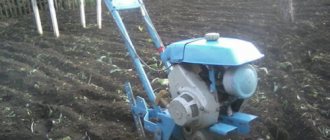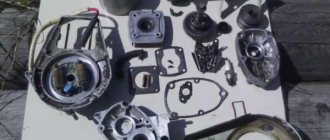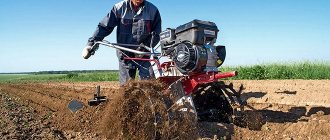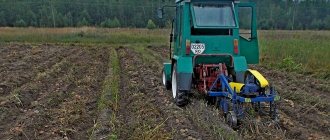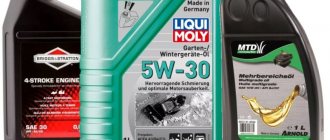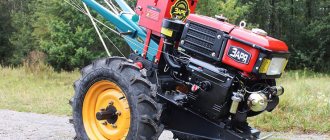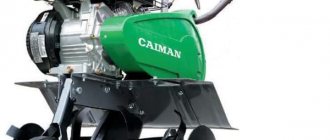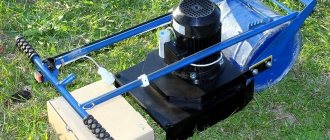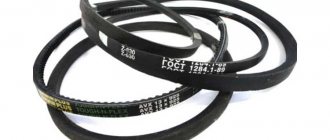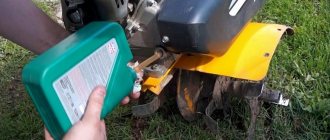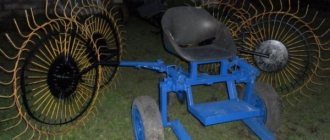Buying a cultivator greatly simplifies the process of performing various types of garden work. It's no secret that such equipment can and does break down. So that the summer resident does not have to buy a new unit, he must understand how to repair the cultivator himself. Let's discuss this issue further in this article.
Spare parts lubrication
What is a cultivator
These are devices that are used for tillage. They can be manual or motorized. The main purpose of use is loosening the soil. Depending on the model, they may also perform some other functions. With their help, it is possible to level the soil, dig up crops or remove weeds.
What is a cultivator
Why does the walk-behind tractor stretch under load?
The problem is quite common. The equipment stops after 5 minutes of operation. Fuel supply and ignition faults are often the cause.
If the equipment stops during operation, you need to check how well the fuel is being supplied:
- The candle is taken out and examined. It's overdried. This indicates a lack of fuel;
- There must be enough fuel in the gas tank for normal operation of the machine;
- The condition of the fuel valve is being examined. You can just block it. Sometimes it is enough to open it for further use of the device.
The outgoing tractor starts and stops in case of ignition failure. First you need to check the spark plugs. Wet objects indicate damage. The ignition system technology must be restored.
Reconfiguration is performed as follows:
- The cover that protects parts of the ignition system has been removed;
- The motor flywheel rotates until the contacts open in the magnet;
- A special probe measures the distance from the anvil to the mallow;
- The flywheel rotates to compress the piston. The latter must reach its peak;
- The flywheel rotates repeatedly until a characteristic knock appears, which indicates the operation of the free wheel;
- The flywheel rotates in the opposite direction until the mark of this element matches the mark on the unit body;
- Clearance from interruption contact to cam 0.3 mm;
- The cam is secured with a screw that is located above the element, and a protective cover is installed in the equipment body.
If the above steps are performed correctly, the walk-behind tractor does not stall under load. The tilter may stop if there is not enough fuel in the fuel tank. The device must be installed directly, disconnect the starter cable. If the engine starts, fill the tank with fuel.
READ What is the difference between Stihl 170 and 180
Varieties
Attachments for cultivators
Motor cultivators are divided into three main groups:
- The least powerful of them have a weight that does not exceed 30 kg. They are intended for use on plots whose area does not exceed 12 acres. Most of these cultivators operate using electricity.
- More powerful devices are designed to work on areas ranging from 10 to 50 acres. Models with a gasoline engine are used here. The weight of such cultivators is 50-90 kg. Their weight allows them to work on fairly hard ground.
- For those plots whose size exceeds 50 acres, even more powerful cultivators are needed. Devices that fall into this category typically weigh more than 90 kg. They can be equipped with additional modules, which significantly expands functionality.
Model range of walk-behind tractors Texas
Texas cultivators are equipped with engines of different power, which determines the nature of the work performed and the basic configuration. One of the popular series among summer residents is the Texas series of Hobby walk-behind tractors, which are produced for working on small plots of land. Hobby models can only work on light soil without stones. According to reviews from owners of lightweight Hobby motor cultivators, for example, Texas Hobby 500, such devices easily cope with creating beds for planting root crops, loosening soil in greenhouses, and forming flower beds.
The Hobby series model range is presented in various options:
- Hobby 300 - allows you to work in a small garden, creating beds and cultivating areas around trees. The model is equipped with a four-stroke engine with a volume of 148 cm³ and a power of 2.6 kW. The engine is accompanied by a chain gearbox, which allows you to create a harrow up to 38 cm wide and 18 cm deep. The weight of the cultivator is only 28 kg.
- The Texas Hobby 500 model has a 4-stroke engine with a power of 2.3 kW. The motor works together with a worm-type gearbox, which allows you to create beds 33 cm deep. The width of the bed will be 50 cm. You can make 6 harrows at the same time, since the cultivator has 6 reciprocating cutters. Texas 500 V differs from the previous model in having a more powerful engine (4.2 kW), which allows you to install various attachments on the walk-behind tractor, for example, a rake, a weight, a hiller, a weeder, and a rear wall. The device weighs 43 kg.
Another series of Texas walk-behind tractors is Lilly, which is represented on the market by the following models:
- Texas Lilli 532 TG;
- 534 TG;
- 572 B;
- 530 TG;
- 601 TG, etc.
Lilly models are equipped with engines of different power and build, which affects the use of particular attachments. You can use only those tools on walk-behind tractors that are specified in the instructions for each type of cultivator.
The Texas Lilli 532 walk-behind tractor has a chain gearbox in a steel case, a belt drive, and a 6.5 liter engine. with., functional control system. Starting the model is very simple, you just need to turn on the starter.
Texas Lilli 532 TG weighs 45 kg, creates a harrow up to 50 cm wide and up to 30 cm deep. The tank needs to be filled with gasoline. In stores you can find models with engines with a power of 5 liters. With.
The 532 B modification differs from the Texas Lilli 532 TG in its engine, the model of which is called the TG 500.
The Texas 530 TG motor-cultivator has been discontinued, but spare parts for it are easy to find. Among the features of the device are the following characteristics:
- Engine TG 500 Power Line.
- The volume of the combustion chamber is 163 cm³.
- Single-speed gearbox without reverse.
- Loosening depth - 32 cm.
- The width of the processed strip varies from 30 to 85 cm.
How to choose the right one
Lawn mower repair
For processing small summer cottages, the most suitable option would be to use a mechanism powered by an electric motor.
It should be taken into account that an important characteristic of a walk-behind tractor is the coverage width. It is determined by the width of the rotating roller with blades for cultivating the soil. It is also called a cutter. If the site has complex terrain, in some cases it will be necessary to use cutters of different widths.
Using electric cultivators is much more convenient than using gasoline ones. They are practically silent and require no maintenance. However, when using them, it is necessary to ensure the possibility of recharging.
How to choose the right one
Those that run on a gasoline engine are more powerful. Working with such cultivators is more difficult than with electric ones. However, gasoline cultivators can cope well with heavy clay soils and are suitable for processing almost any size.
Why does the walk-behind tractor stall under load?
The problem when the walk-behind tractor operates with periodic stalls and does not develop speed is perhaps the most common among gasoline and diesel units. If the walk-behind tractor starts and stalls, the main reasons for this phenomenon should be sought in the fuel supply and ignition systems, malfunctions of which may appear after 5 minutes of operation.
If the walk-behind tractor does not develop speed and stalls spontaneously, you need to check:
- aerofilter - if it becomes clogged, its surface is cleaned, washed or blown with a vacuum cleaner.
- quality of refueled fuel;
- ignition system - its diagnosis begins with a spark plug, the external condition of which is used to judge the functionality of the ignition.
In addition to the spark plug, other ignition failures of the walk-behind tractor are:
- incorrect gap between electrodes;
- mechanical damage to the electrical circuit;
- unadjusted angle between the magnetic part and the coil.
Repairing them yourself is allowed if this is provided for in the user manual for a specific walk-behind tractor model;
- muffler - the engine stalls during operation and does not develop speed due to a clogged muffler. To free it from combustion products, it is soaked in water with detergents and, after washing, dried;
- carburetor, the settings of which may be incorrect;
- cylinder-piston parts, due to which the engine does not develop speed under load. This can only be checked with a compression gauge.
It also happens that the cultivator suddenly stalls when tilted in both directions or only to the left or right. Most often this occurs due to insufficient oil level. At the moment of tilt, the lubricant remaining sensor in the crankcase may be triggered, which automatically blocks the motor.
Common breakdowns and repairs
The need for repairs arises when existing operating rules are violated. When performing them, failure can most likely occur due to wear of parts.
Does not start
Cultivator "Tarpan"
In this case, the reason why repair of cultivators is needed is a malfunction in the fuel system. Other signs may also indicate this:
- The engine starts, but even at idle it runs rough.
- The cultivator begins to smoke.
- You can see drops of fluid coming from the muffler.
- As soon as the load increases, the engine immediately stalls.
In order to repair motor cultivators yourself and cope with this problem, you need to do the following:
- First check the condition of the air filter. To do this, simply examine it. It happens that there are bird feathers, straw remains and other debris on it. This may be causing the problem. You need to replace it with a spare one and start the engine again.
- If the situation cannot be corrected, you need to ventilate the fuel filter.
- After this, it is recommended to wipe the carburetor with acetone. Then you need to visually evaluate the free play of the throttle valve.
- Then check the reliability of the fuel line connections.
- Now it’s time to check the piston system. It needs to be disassembled, thoroughly wiped and then reassembled.
- It is necessary to evaluate the free play of the piston shaft. To do this, you need to turn it manually using a key. In this case, it is necessary to ensure that the shaft has free play and that the valve system is working properly.
- Now you will need to pour oil into the engine.
To check the health of the device, you need to see how it works at idle. It is recommended that before starting the cultivator, if necessary, add oil again.
Important! It is recommended that before repairing the motor, take a photograph of how it looks assembled. This will help you assemble it correctly after the repair is completed.
Common breakdowns
Buries itself in the ground
Sometimes movement instability can be observed. To determine what to do when a cultivator digs into the ground, you need to understand why this happens. This is usually due to uneven air inflation into the wheels, varying tire wear, or improper attachment of the suspension device, which is easy to fix.
Engine
Here is a list of the most likely engine-related cultivator malfunctions. They can be divided into the following main groups:
- A situation where it is necessary to troubleshoot problems related to the engine fuel system. This, in particular, happens if the carburetor is clogged, the fuel line is torn or clogged, or the fuel pump breaks down.
- Malfunction of the electrical system. This is usually due to the fact that the ignition system stops working normally.
- Some breakdowns may relate to the mechanical system of the cultivator: the piston system, gearbox or other components.
- Trouble can happen if the filters are clogged.
- The last category includes the use of low-quality gasoline to refuel the engine.
When the cultivator does not start, the reason is one of those listed here.
Cultivator repair
Carburetor
If the device does not start, the likely cause is poor fuel supply.
One possible reason for this could be a faulty carburetor.
First you need to determine whether gasoline is supplied here. To do this, you need to press the button on the float chamber or disconnect the fuel hose. If fuel flows out of the chamber cover, everything is in order, fuel is supplied. This means that the reason is in the carburetor itself, and it needs to be cleaned.
If after this the engine starts normally, this means that this was the cause of the malfunction.
Sometimes it is enough to adjust the cultivator carburetor.
Gearbox
Sometimes the cultivator makes too much noise during operation. To repair a motor-cultivator gearbox, you need to find the cause of the problem. One likely reason for this could be a faulty gearbox. Sometimes the problem occurs due to lack of oil. In this case, you need to top it up, and the noise will most likely decrease.
Another reason could be faulty seals. You need to check them and, if necessary, use spare parts for cultivators. This problem can occur as a result of excessive wear or if they were not installed correctly.
The most common malfunctions of motor cultivators
Reverse
The reverse gear circuit on the Mole cultivator was not provided on early models. This in some cases reduced the performance of the device. The lack of such an opportunity negatively affected the work with various suspended devices: a snow blower, a cargo cart, a mower and others.
The manufacturer has modernized the cultivator, equipping it with a reverse function, which significantly increased the mobility of this device.
A similar opportunity is available in French-made Cayman cultivators.
In the DDE Hulk motor-cultivator, the transmission device allows you to have not one, but two reverse speeds.
Drive belt
This part is designed to transmit torque from the engine crankshaft to the working unit of the cultivator. The drive belt is one of the most vulnerable parts of a motor cultivator.
It is designed to perform the following functions:
- Transmission of rotation from the motor to the gear shaft.
- Corrects the load value when switching operating modes.
- Provides the ability to stop and then resume movement of the cultivator without turning off the motor.
If the drive belt is damaged or torn, it must be replaced. However, the cause of the malfunction may be oil contamination or sagging. In these cases, it is enough to eliminate the existing cause of the problem.
Heavy electric cultivator
What parts may become unusable?
All working components of cultivators are subject to quite heavy loads during their operation. For this reason, they need regular inspection and repair. First you need to configure the ignition systems and fuel pump of the unit. After all, during the winter period, it stood idle “without work,” which can cause problems with starting the engine. It's also worth checking the transmission. Remember, negligence at this stage of work can lead to serious damage and the need for major repairs of cultivators.
Disassembling the motor
To do it yourself, you need to get to the root of the issue. That is, understand the cause of the malfunction and in which unit of the device it occurred.
Conventionally, all equipment failures of this type can be divided into two groups:
- device engine failure;
- failure of other parts of the equipment.
According to reviews from experienced summer residents who use Texas or Mole cultivators on their plots, problems of the first group are more common. How to carry out repairs yourself will become clear if you read this article to the end.
Cultivator maintenance
Here are a few rules that will help you maintain cultivators and keep your cultivator in good working order:
- Immediately after purchase, the cultivator is run in. To do this, it is turned on without load for several hours. Then it is used for 20 hours in minimal mode.
- You need to change the oil on time. Even if it is high quality, it has a lifespan. If you don't change it, it will become useless over time.
- To carry out maintenance of motor cultivators, you need to regularly inspect the cultivator's feet. Debris can get stuck in its working parts, so you need to clean them regularly.
- If this device has not worked for a long time, then before starting use it is necessary to inspect the engine and fill in new oil. The cultivator must be checked and adjusted in accordance with the instructions for this model.
- It is necessary to start the engine so many times that the carburetor remains empty after finishing work.
- Some people wonder whether it is necessary to sharpen cutters on a motor cultivator. This can be done, but they will quickly become dull. Many people work on this device without sharpening.
- Parts of the cultivator that move and are subject to friction must be lubricated with oil.
- It is recommended to wipe the parts of the cultivator daily with a cloth moistened with a small amount of gasoline.
- If any part of the device has deteriorated or broken, it is recommended to replace it by contacting the service center for motor cultivators.
Important! When purchased, instructions are included with the device, which discusses in detail what kind of maintenance should be carried out for this model.
The design of Daewoo motor cultivator engines and the repairs they require are described in detail in the corresponding technical manual.
If there is a need for simple repairs, in most cases you can fix the problem yourself. However, if technical difficulties arise, it is best to contact a repair service specialist.
0 0 votes
Article rating
Gearbox problems
You will need to repair the cultivator gearbox if its operation is accompanied by increased noise. A similar phenomenon is typical in case of lack of oil. Add it to the gearbox of the device, or better yet, replace it altogether.
Also, noise may occur due to “looseness” of the fasteners of the units: inspect and fix them with your own hands.
In addition, summer residents may encounter the problem of oil leaking from the gearbox. This can happen when the bearing seals are worn out or incorrectly installed, when the covers are poorly secured and the accompanying gaskets are deformed. Replacing and subsequent high-quality installation of oil seals, independent replacement of gaskets and fixing the cover fasteners, as well as high-quality cleaning of the breather will help eliminate such a leak.
Do not forget to promptly change those parts of the Texas gearbox that are more susceptible to wear during operation of equipment of this kind than others.
User manual
In order for the walk-behind tractor to last as long as possible, and to make working with it simple and comfortable, it is necessary to follow a number of recommendations.
- The new walk-behind tractor is run in for 25 hours, after which oil is added to the gearbox and the lubricant in the crankcase is completely changed. The next oil change is performed every 50 hours of operation.
- Every 100 hours of operation, the walk-behind tractor is cleaned of dirt and dust, the oil in the gearbox is changed and new belts are installed, and the throttle and clutch cables are lubricated every 300 hours.
- Installation of additional modules, such as a plow, pump, cutter, potato digger or mower, must be carried out with the engine turned off and on a level surface.
- When wheels slip on heavy soils and clay soils, it is necessary to attach additional weights to the unit, and when working with a plow on virgin soil, a counterweight is necessary.
- It is strictly prohibited for persons under 18 years of age to operate a walk-behind tractor.
- To extend the service life of the walk-behind tractor battery, it must be stored at a temperature of at least 10 degrees. Otherwise, the density of the electrolyte decreases, and the wear of the plates, on the contrary, increases.
- Periodically check the air filter and drive belt tension, and tighten nuts that become loose due to vibration.
- If there is an extraneous knocking sound in the engine or if other problems are detected, it is prohibited to use the walk-behind tractor.
In the absence of certain technical knowledge and skills, it is not recommended to independently repair complex components and assemblies.
To learn how to properly break in a walk-behind tractor, watch the following video.
